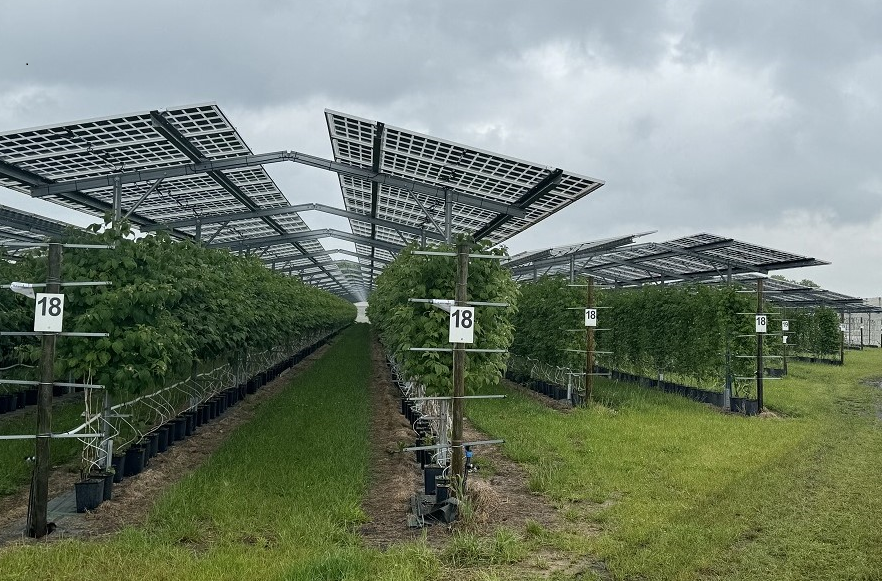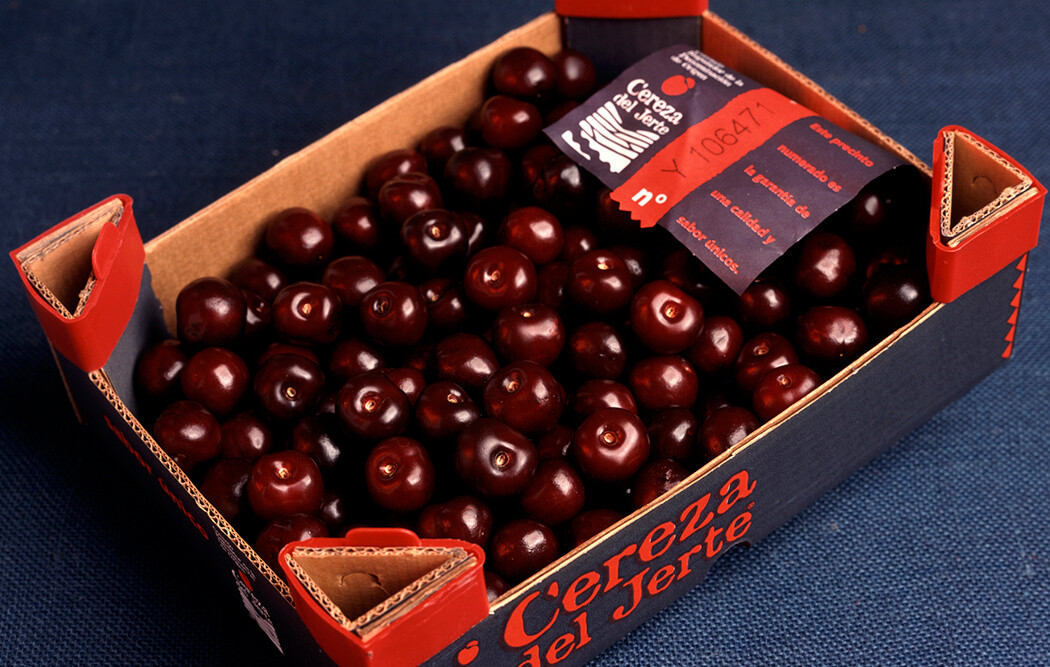One of the great advantages of this new technology is that, thanks to its height (4.5 meters), it acts as a physical protection against damage caused by rain and hail to sensitive fruits such as cherries.
"By 2050, the FAO states that the world's agricultural area will be reduced by half, which will impact production and food security," said Jorge Retamal, a fruit cultivation researcher at INIA Quilamapu, analyzing the increase in photovoltaic installations on agricultural land in recent years.
He emphasized that the reduction of these lands is complex, so alternatives must be sought to make the production of clean energy coexist with national agricultural production.
The specialist participated, along with a group of representatives from Ñuble agriculture, in a technological tour in Germany, Switzerland, and Spain to learn about the pros and cons of a new type of panel called "agro-photovoltaics," which are distinguished by their dual purpose of generating electricity using solar radiation and developing orchards located under the panel structures.
Retamal explained that the difference with traditional solar panels is that they block the passage of sunlight, preventing the commercial development of crops, while agro-photovoltaic panels "consider a transparent structure that allows light to pass through and, therefore, the crops underneath them."
In fact, he indicated that at the experimental level there are already two specific projects in the Ñuble region (in Coihueco and on the premises of the Adventist University of Chile), for a total of about 50,000 watts of energy produced.
The researcher stated that there are still aspects to be resolved, such as the installation protocols of the structure, the diversity and quality of the panels, the physiological alterations of the orchards, among others, which would allow avoiding mistakes in the implementation of future agro-photovoltaic panels.

Productive advantages and energy savings
One of the great advantages of this new technology is that, thanks to its height (4.5 meters), it acts as a physical protection against damage caused by rain and hail to sensitive fruits such as cherries, significantly reducing fruit cracking that causes losses of millions each year.
Jorge Retamal emphasized that the incorporation of these agro-photovoltaic panels would "increase the efficiency of land use by over 150%, as they combine the production of energy with that of fruit," which is particularly attractive in the central-southern regions, where more than two thousand hectares of solar parks have already been established "which are no longer available for agriculture".
He noted that Switzerland and Germany have already banned the establishment of new traditional photovoltaic parks on agricultural land, which is crucial for maintaining food sovereignty.
Additionally, he highlighted the importance of "having the necessary surface area to be food self-sufficient in the future," adding that these countries already have legislation on the matter and "subsidize agro-photovoltaic systems that generate a land use efficiency of over 100%, combining the energy criterion with food production."

Savings and environmental benefits
In terms of associated costs, the researcher stated that a cherry grower can save 100% of the energy costs and also generate income from selling the unused energy. He emphasized that with about 2,000 square meters of agro-photovoltaic panels, the energy needed for a 50 hectare cherry orchard with advanced irrigation and a frost control system can be produced.
But he also added that the impact of this new technology has an environmental component, as it replaces the use of plastic, usually used in covers and greenhouse roofs, in addition to the durability of this type of panel, which "lasts over 20 years, unlike plastic, which needs to be replaced every two or three years."
Meanwhile, the regional deputy director of R&D at INIA Quilamapu, Paz Millas, recalled that technologies like this also help reduce the impact of summer radiation, which has intensified in recent years and causes increasingly frequent sun damage to fruit and wood.
He also indicated that there are benefits for the health of fruit trees, as they are protected in winter from rain splashes, reducing the time leaves stay wet. "Most diseases require splashes for dispersion and a film of water on the leaves to generate infection," he stated.
The technical visit to Europe was organized by the Adventist University of Chile, which was also attended by the president of the Ñuble Producers Association, Carlos González; the president of the Ñuble region's productive development board, Marcos Prado; the coordinator of Prodesal in the municipality of Coihueco, Isnelia Quintana; and UNACH professor, Victor Pizarro.
The trip was part of the project "Transfer and development of an agro-photovoltaic system in cherries and strawberries" promoted by the university.
Source: Diario Frutícola
Images: Diario Frutícola
Cherry Times - All rights reserved












